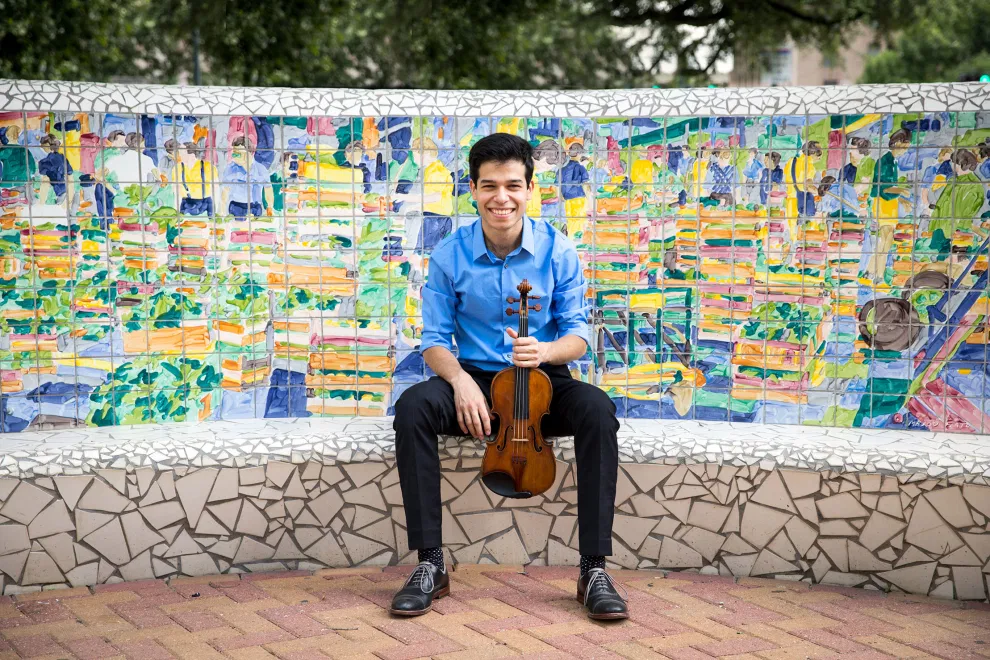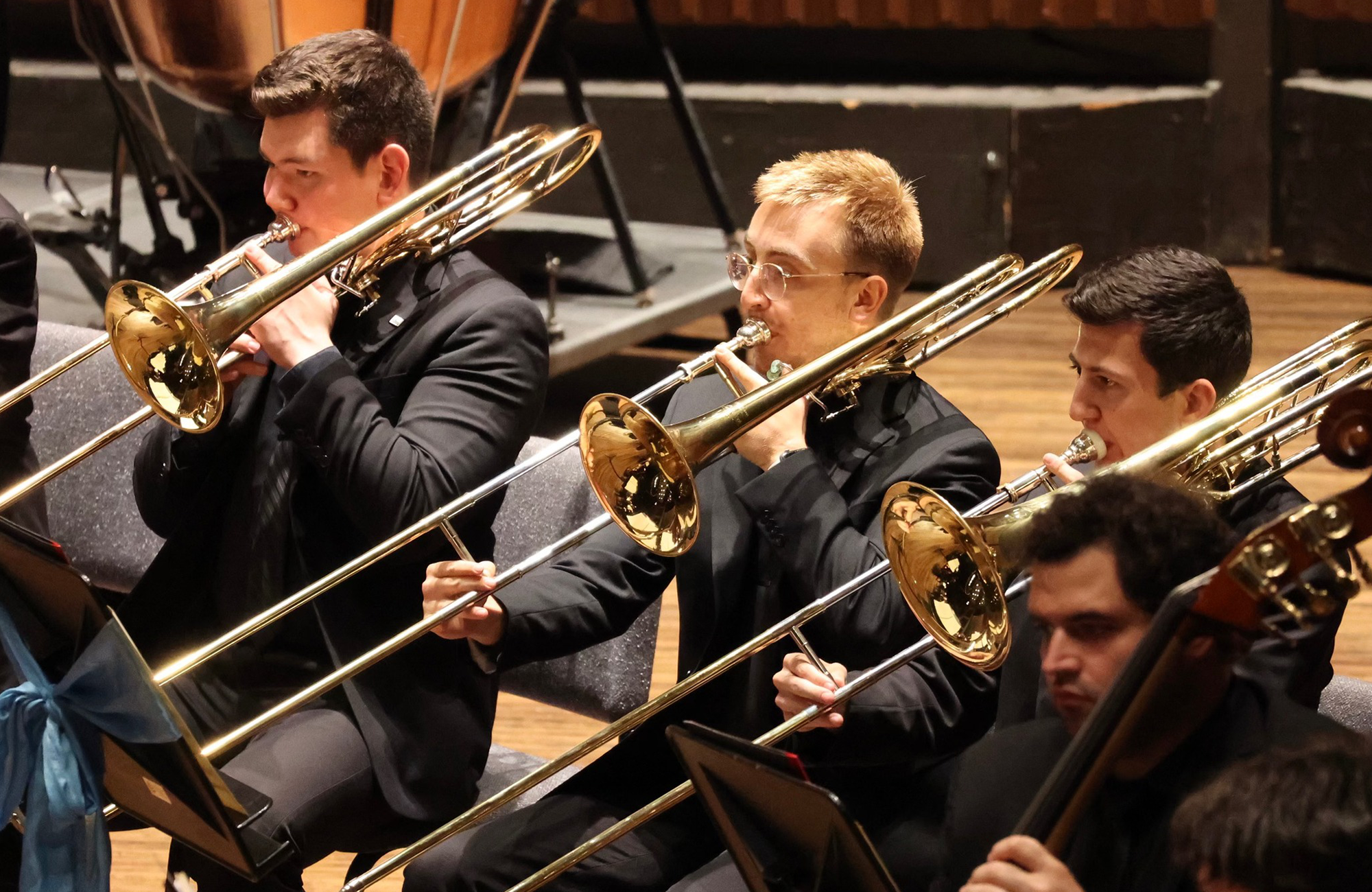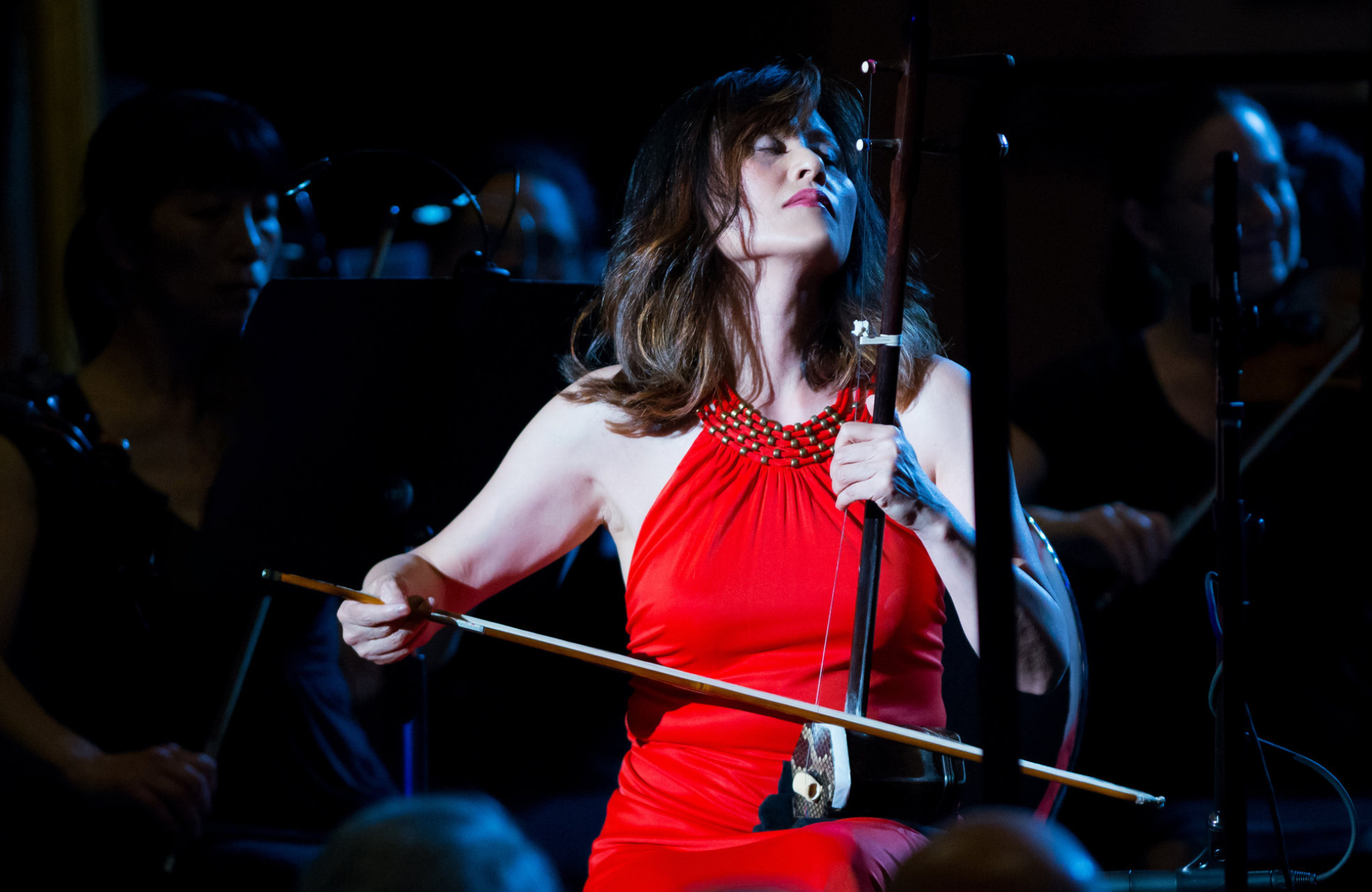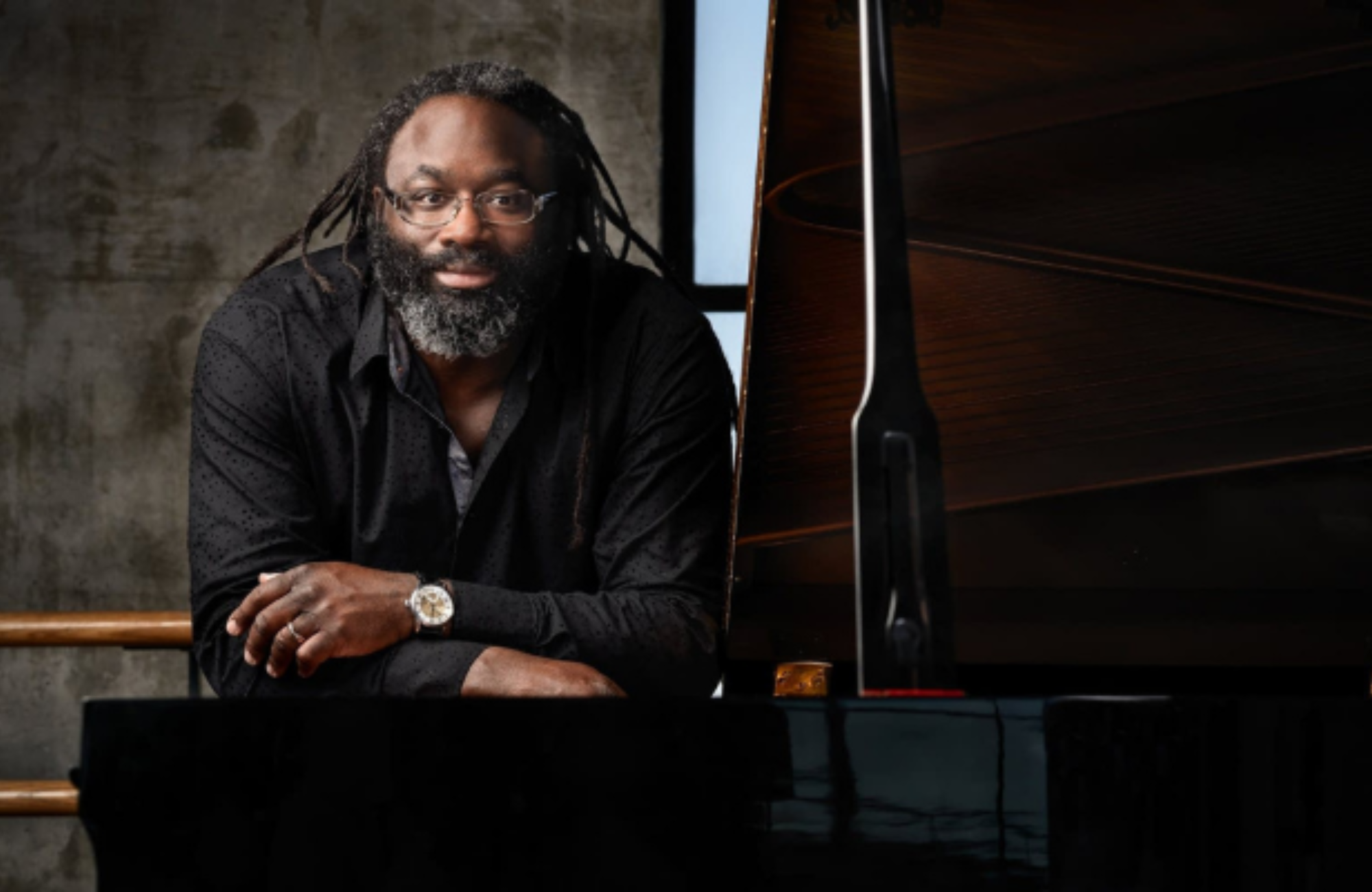Inspired by Antonin Dvorak’s instance at creating an American symphonic idiom, his Symphony No. 9 (From the New World) is paired with two amazing American works. Symphoria performs Adolfus Hailstork’s An American Fanfare in celebration of the composer’s 80th birthday and Erich Korngold’s cinematic Violin Concerto rounds out the evening.
Please read our COVID policies here
PROGRAM
HAILSTORK: An American Fanfare ![]()
KORNGOLD: Concerto for Violin in D major, op.35 ![]()
DVOŘÁK: Symphony No.9 in E minor, op.95, B.178 ![]()
Please Note: Seating at Inspiration Hall may be limited due to Covid-19 restrictions, and if restrictions are in place at the time of the concert, we will make every effort to accommodate all patrons. If we are unable to accommodate in person attendance, patrons may be offered an alternate concert date, or a livestream option.
We are pleased to feature Ruben Rengel, a 2018 Sphinx prize winner performing the Korngold Violin Concerto. Please enjoy this recording of his prize winning performance from 2018.
PROGRAM NOTES
In the New World
November 6-7, 2021
This concert traces out some dizzying twists in the history of United States classical music—so it might be useful to begin with some backstory.
Louis Moreau Gottschalk (1829–1869), the first US composer with an international reputation, had taken his inspiration largely from vernacular music, including patriotic songs and folk music from both North and South Americas. But he was dismissed by the cognoscenti of the time (in fact, he still is); and most of the 19th-century composers who came after him, like Edward MacDowell and Horatio Parker, were ...
In the New World
November 6-7, 2021
This concert traces out some dizzying twists in the history of United States classical music—so it might be useful to begin with some backstory.
Louis Moreau Gottschalk (1829–1869), the first US composer with an international reputation, had taken his inspiration largely from vernacular music, including patriotic songs and folk music from both North and South Americas. But he was dismissed by the cognoscenti of the time (in fact, he still is); and most of the 19th-century composers who came after him, like Edward MacDowell and Horatio Parker, were loftily Eurocentric. To counter this trend, in 1891 Jeannette Thurber, president of the National Conservatory of Music in New York, asked Antonín Dvořák (1841–1904) to serve as the school’s artistic director. Granted, Dvořák was a European; but he wrote music based on his own nation’s folk music, and she hoped that he would encourage US composers to do the same. Her expectations were fulfilled. During his years in the United States (1892–1895), he had a profound effect, pushing the country’s music in new directions.
Given this history, it’s no surprise that Dvořák’s 1893 Symphony No. 9, which was written during his stay here, has been mined by critics for evidence of the African American and Native American traditions Dvořák admired. That way of looking at the music is further supported by its nickname (“From the New World”) and by some early encouragement from the composer himself. But is the Ninth really grounded in traditions from the “New World”? True, in the second movement, the English horn sings out the tune familiar as “Goin’ Home.” But “Goin’ Home” is not a pre-existing folk spiritual; it was composed nearly three decades later by William Arms Fisher, a White student of Dvořák’s—and was specifically based on Dvořák’s tune. And while Dvořák said he was inspired by the “fundamental characteristics” of music he heard in the United States, there are no direct quotations from Native American or Black folk traditions. Over the years, in fact, the symphony has come to sound increasingly Czech. Indeed, especially given its quiet ending, it seems to be yearning for the Old World as much as it is celebrating the New.
The “New World” Symphony was a hit from its premiere; and if you’re coming to the work for the first time, you—like those early listeners—will probably be swept up in its energy and its melodic beauty, as well as by the way themes from one movement reoccur elsewhere in the symphony. The immediacy of its impact is one reason why the work has long served as an ideal introduction to symphonic music (it was one of the first classical pieces conductor Larry Loh heard growing up). But if you know it already, you’ll probably find new wonders each time you listen to it—which is why has stayed in the repertoire, and has allowed performers like Larry to see their interpretations evolve. Thus, for all the beauty of that English horn tune that Fisher took up, it’s just one of several gorgeous themes in the movement. And nowadays Larry’s favorite part of the slow movement comes later, “when the violins are playing the third theme, a long, mournful melody over a walking bass—it’s so beautiful.” He’s come to be even more taken with the rhythmic imagination of the third movement, “which has so much more than the average dance movement.”
In any case, Dvořák’s outspoken support for local traditions, as I’ve mentioned, caught on. His influence is not easy to trace precisely, and it was not universal; but it’s fair to say that in the wake of his visit, US concert music increasingly drew on local traditions. Black composers like Florence Price were especially fired up by Dvořák’s principles—but we can also see resistance to Eurocentric idioms in the music of composers like Ives, Gershwin, and Copland. In fact, in the early part of the twentieth century, influence moved in the opposite direction, and European composers like Ravel were increasing apt to take inspiration from the United States, especially from jazz, or what they thought, based on the recordings they heard, was jazz.
But whatever else you can say about the history of US concert music, it has never followed a straight line, and the combination of the Russian Revolution and, even more, the rise of fascism in Europe led to an influx of Central and East European composers, who of course brought a new influx of European-based music. Paradoxically, especially in the 1930s, many of those composers ended up in Hollywood—so to a large extent, the “Hollywood sound,” something so closely associated with the United States, had its origins in Europe. Max Steiner, Franz Waxman, and André Previn were all refugees from Naziism—but perhaps the greatest composer in that group was Erich Wolfgang Korngold (1897–1957).
Austrian-born Korngold was a child prodigy on the order of Mozart and Mendelssohn, admired as a teenager by Mahler and Strauss. By the time he was 23, his opera Die Tote Stadt had made him a major name around the world. Starting in the 1930s, he wrote film scores as well, shuttling between Europe and the United States. Fortunately, he was in Hollywood working on Robin Hood (coincidentally, an anti-fascist film disguised as a historical romance) when the Germans took over Vienna; and he moved permanently to the United States, where he committed himself to working exclusively on film music until the German defeat. With films like Robin Hood and Anthony Adverse (both of which won Academy Awards), he helped define what we think of as “movie-music style.”
After the war, he returned to concert music, producing his two greatest concert works: his Symphony in F# Minor and tonight’s offering, his 1945 Violin Concerto. The origin of the Concerto’s music is vexed. It’s often said that the main material is taken from four film scores—Another Dawn, Juarez, Anthony Adverse, and The Prince and the Pauper. But it’s quite possible (as tonight’s soloist Rubén Rengel suggests) that it was the other way around, that the films borrowed themes from a Violin Concerto he was already conceiving—or that the Concerto and the film scores developed in tandem. In any case, this gloriously orchestrated concerto has its roots in the post-romantic Viennese classical music, offering the romantic sweep of Mahler and Strauss rather than the lean sass of Gershwin. It’s tied in other ways to Vienna, too. It’s dedicated to Alma Mahler Werfel, Mahler’s widow; and it was inspired by two refugee violinists: Bronislaw Huberman originally asked Korngold to compose it, and Jascha Heifetz (who worked with Korngold to increase the difficulty of the solo part) eventually premiered it.
When the Violin Concerto was introduced, it got scathing reviews from some more snobbish critics, who (perhaps not fully understanding the complex relationship between Hollywood and European classical music) accused it of being too cinematic. Audiences, however, were less prejudiced, and over the years, this has come to be one of the most beloved violin concertos of the post-war period. For good reason: As tonight’s soloist Rubén Rengel puts it, “It’s innately violinistic, a great fit for the instrument”; it also has plenty of fireworks (especially in the finale), and plenty of lyricism, too. “It’s luscious and singing,” he says, “and it covers a wide range of characters throughout the piece.” The words “singing” and “characters” are significant, reminding us that Korngold was drawing on his expertise in the opera house as much as on his Hollywood experience. And for Rubén, that means that as a performer, he needs to play “with the kind of rhythmic freedom a singer would have.” It’s hard not to enjoy the music’s heroic side, but, says, Rubén, “the more intimate, more vulnerable moments are definitely my favorites.”
Given this dizzying interplay between Europe and the United States, the 1985 American Fanfare by Adolphus Hailstork (b. 1941) is an especially appropriate opener. Arguably the eminence grise among Black composers and teachers, Rochester-born Hailstork is celebrating his 80th birthday this year. Over his illustrious career, he’s written absolute music, sacred music, and programmatic works with deep roots in US history and culture (especially the history and culture of Black Americans), including an opera about the Underground Railroad and a new tribute to George Floyd. Today’s fanfare is, in the composer’s words, “A juxtaposition of Euro-American and Afro-American styles”—the latter most evident in the blues licks that enter the piece about halfway through.
Peter J. Rabinowitz
Have any comments or questions? Please write to me at prabinowitz@ExperienceSymphoria.org
FEATURED ARTISTS
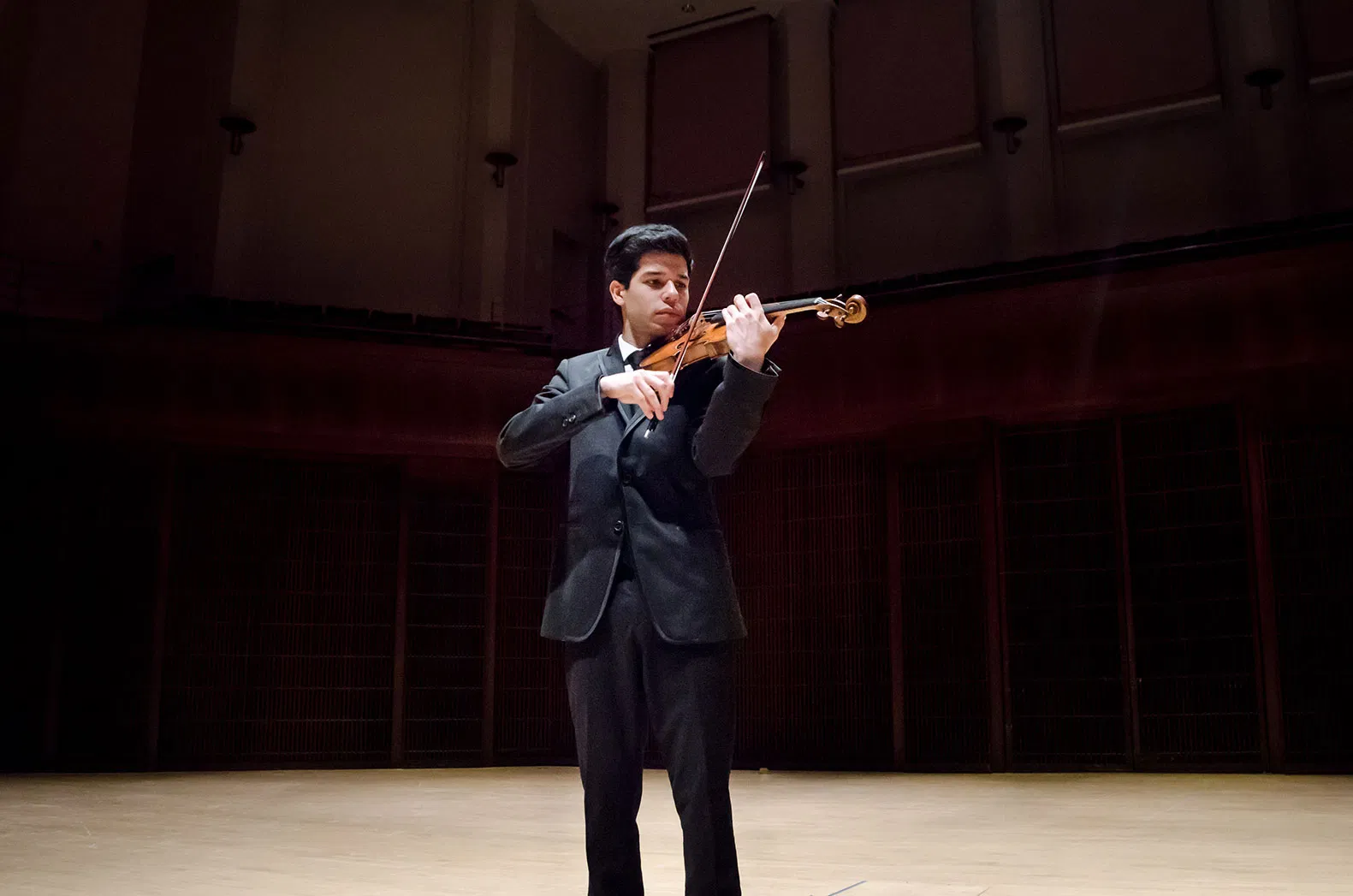
Praised as a “excellent soloist” of “great virtuosity” (NY Concert Review), with performances depicted as “thrilling” (Boston Globe), violinist Rubén Rengel is quickly gaining recognition as a remarkably gifted artist. Rubén was the winner of the Robert F. Smith Prize at the 2018 Sphinx Competition, the Cleveland Institute ...
Praised as a “excellent soloist” of “great virtuosity” (NY Concert Review), with performances depicted as “thrilling” (Boston Globe), violinist Rubén Rengel is quickly gaining recognition as a remarkably gifted artist. Rubén was the winner of the Robert F. Smith Prize at the 2018 Sphinx Competition, the Cleveland Institute of Music Concerto Competition (2014), recipient of the Sallie Shepherd Perkins Prize (2019) and the Anna Y. Tringas Award (2013), and winner of the Juan Bautista Plaza National Violin Competition of Venezuela (2011).
He has appeared as a soloist with the Philadelphia Orchestra, Detroit Symphony, Houston Symphony, New Jersey Symphony, Vermont Symphony, and Venezuela Symphony, among others. As an avid chamber musician, he has collaborated with Joseph Silverstein, Pamela Frank, Peter Wiley, David Shifrin, Joel Krosnick, Timothy Eddy, and Gilbert Kalish. Rubén is a former member of the Autana Trio, prize winners at the 2015 Fischoff Chamber Music Competition.
Rubén has attended music festivals such as Music@Menlo, the Perlman Music Program, the Aspen Music Festival and School, the Meadowmount School of Music, and the New York String Orchestra Seminar.
In addition to classical music, Rubén has extensive experience performing Venezuelan folk music and Jazz. This has allowed him to develop important abilities in the area of improvisation, and he has recorded and toured with distinguished Venezuelan ensembles. He also has a strong interest in the art of conducting and enjoys performing as a violist.
Community engagement and education are important components in Rubén’s activities. He has participated in programs with Street Symphony, Da Camera Houston’s Young Artist Program, the Sphinx Organization, the Cleveland School of the Arts, the Cleveland Institute of Music, the Shepherd School of Music, Music@Menlo, and the Perlman Music Program. Rubén has taught master classes at the North Carolina School of the Arts, the Longy School of Music of Bard College, and was teaching assistant of Jan Mark Sloman, Patricia McCarty, and Kathryn Lucktenberg at the Meadowmount School of Music.
Rubén is currently pursuing a Professional Studies Certificate at the Manhattan School of Music as a student of Mark Steinberg. Rubén earned a master’s degree at the Shepherd School of Music at Rice University as a student of Paul Kantor, and a bachelor’s degree at the Cleveland Institute of Music as a student of Jaime Laredo. Rubén’s previous education was centered at the Emil Friedman Conservatory and School in Caracas, where he studied with Iván Pérez Núñez.
Rubén plays on a 1723 Carlo Bergonzi violin on loan from a generous collection, and he is a Kun Shoulder Rest Featured Artist.

Described as bringing an “artisan storyteller’s sensitivity… shaping passages with clarity and power via beautifully sculpted dynamics… revealing orchestral character not seen or heard before” (Arts Knoxville) Lawrence Loh enjoys a dynamic career as a conductor of orchestras all over the world.
After an extensive two ...
Described as bringing an “artisan storyteller’s sensitivity… shaping passages with clarity and power via beautifully sculpted dynamics… revealing orchestral character not seen or heard before” (Arts Knoxville) Lawrence Loh enjoys a dynamic career as a conductor of orchestras all over the world.
After an extensive two year search, Lawrence Loh was recently named Music Director of the Waco Symphony Orchestra beginning in the Spring of 2024. Since 2015, he has served as Music Director of The Syracuse Orchestra (formerly called Symphoria), the successor to the Syracuse Symphony Orchestra. “The connection between the organization and its audience is one of the qualities that’s come to define Syracuse’s symphony as it wraps up its 10th season, a milestone that might have seemed impossible at the beginning,” (Syracuse.com) The Syracuse Orchestra and Lawrence Loh show that it is possible to create a “new, more sustainable artistic institution from the ground up.”
Appointed Assistant Conductor of the Pittsburgh Symphony in 2005, Mr Loh was quickly promoted to Associate and Resident Conductor within the first three years of working with the PSO. Always a favorite among Pittsburgh audiences, Loh returns frequently to his adopted city to conduct the PSO in a variety of concerts. Mr. Loh previously served as Music Director of the West Virginia Symphony Orchestra, Music Director of the Northeastern Pennsylvania Philharmonic, Artistic Director and Principal Conductor of the Syracuse Opera, Music Director of the Pittsburgh Youth Symphony Orchestra, Associate Conductor of the Dallas Symphony Orchestra, Associate Conductor of the Colorado Symphony Orchestra and Music Director of the Denver Young Artists Orchestra.
Mr. Loh’s recent guest conducting engagements include the San Francisco Symphony, Dallas Symphony, North Carolina Symphony, Baltimore Symphony, Sarasota Orchestra, Florida Orchestra, Pensacola Symphony, Atlanta Symphony, National Symphony, Detroit Symphony, San Diego Symphony, Seattle Symphony, National Symphony (D.C.), Utah Symphony, Rochester Philharmonic, Indianapolis Symphony, Calgary Philharmonic, Buffalo Philharmonic, Albany Symphony and the Cathedral Choral Society at the Washington National Cathedral. His summer appearances include the festivals of Grant Park, Boston University Tanglewood Institute, Tanglewood with the Boston Pops, Chautauqua, Sun Valley, Shippensburg, Bravo Vail Valley, the Kinhaven Music School and the Performing Arts Institute (PA).
As a self-described “Star Wars geek” and film music enthusiast, Loh has conducted numerous sold-out John Williams and film music tribute concerts. Part of his appeal is his ability to serve as both host and conductor. “It is his enthusiasm for Williams’ music and the films for which it was written that is Loh’s great strength in this program. A fan’s enthusiasm drives his performances in broad strokes and details and fills his speaking to the audience with irresistible appeal. He used no cue cards. One felt he could speak at filibuster length on Williams’ music.” (Pittsburgh Tribune)
Mr Loh has assisted John Williams on multiple occasions and has worked with a wide range of pops artists from Chris Botti and Ann Hampton Callaway to Jason Alexander and Idina Menzel. As one of the most requested conductors for conducting Films in Concert, Loh has led Black Panther, Star Wars (Episodes 4-6), Jaws, Nightmare Before Christmas, Jurassic Park, Casablanca, The Wizard of Oz and Singin’ in the Rain, among other film productions.
Lawrence Loh received his Artist Diploma in Orchestral Conducting from Yale, his Masters in Choral Conducting from Indiana University and his Bachelor of Arts from the University of Rochester. Lawrence Loh was born in southern California of Korean parentage and raised in Carlisle, Pennsylvania. He and his wife Jennifer have a son, Charlie, and a daughter, Hilary. Follow him on instagram @conductorlarryloh or Facebook at @lawrencelohconductor or visit his website, www.lawrenceloh.com


